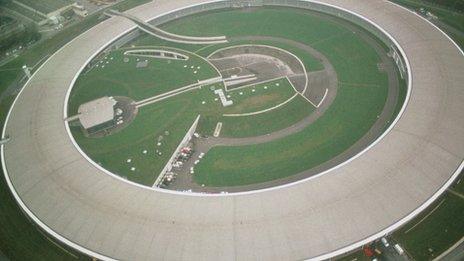Hidden Degas portrait revealed
- Published
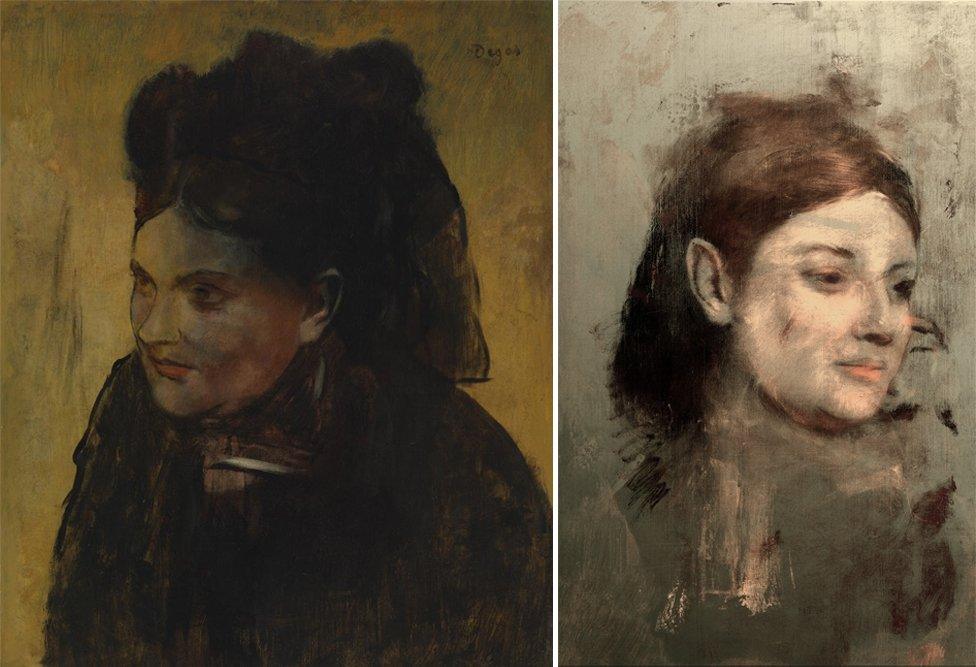
Degas' Portrait of a Woman (left) covered another painting (right)
A hidden portrait by the French Impressionist painter Edgar Degas has been revealed by scientists.
Researchers in Australia used powerful X-rays to bring to light the painting of a young woman concealed beneath a work called Portrait of a Woman.
The researchers believe the subject is Emma Dobigny, who appeared in other Degas paintings.
The findings are described in the journal Scientific Reports., external
Dr Daryl Howard, a co-author of the study, told BBC News: "I think what is really exciting is that we have now been able to add one more Degas artwork for the world to see."

The underlying image, which is upside down, appears as a stain on the woman's right cheek
It had long been known that Degas' portrait of a woman wearing a black bonnet and dress, which he painted in the late 1870s, covered an earlier painting.
A ghostly impression of the composition appears as a dark stain on the sitter's face, and over the years has become more prominent as the oil paint thinned.
Conventional X-rays revealed the outline of another image was lurking beneath, but without scraping away the outer painting, the researchers required a much more powerful technique to show any detail.

Conventional X-rays confirmed there was an underlying painting but revealed little detail
For that, they used the Australian Synchrotron, a huge accelerator that generates more powerful X-rays, to peer beneath the top layers of paint.
They were able to detect the metallic elements in the pigments that Degas had used in his underlying artwork.
Dr Howard, from the Australian Synchrotron, said: "Each element has its own unique signature, and so that gets collected.
"And what we do is analyse that data and build up these 'elemental maps'. And that allows us to image all the different pigments used in the painting."
Through this they were able to see in colour and in remarkable detail Degas' hidden work: a portrait of a woman with auburn hair.
Unfinished, it shows how the artist made several attempts to rework her features.
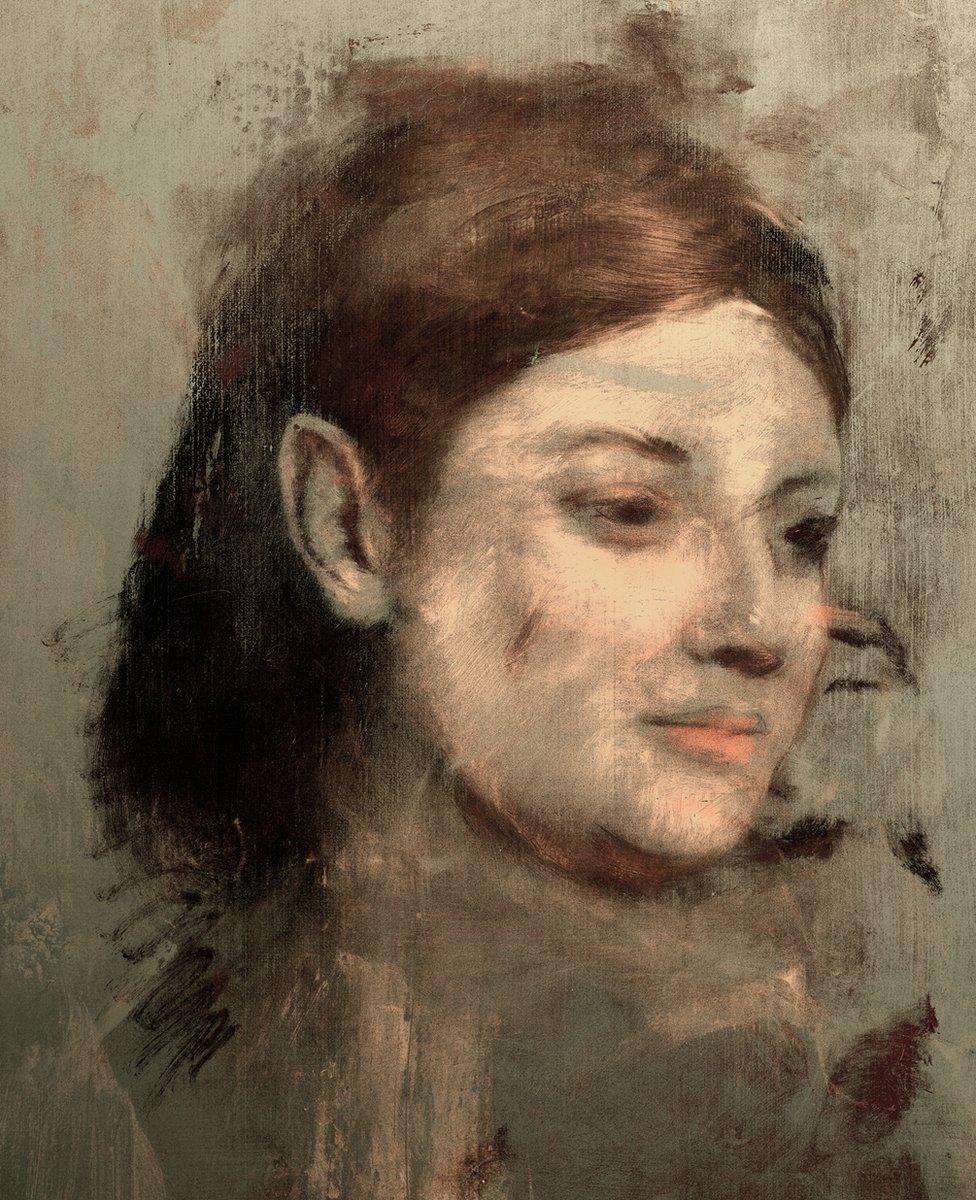
The powerful X-rays of the Australian Synchrotron probed beneath the top layers of paint to reveal this
But the scientists said it was clear enough to try to work out who the subject was.
Dr Howard explained: "Once the image had come through, basically what I did was to look up Degas's catalogue of works. And I would say in under five minutes, it seemed that we had a good match.
"We suggested that the hidden portrait is of a model he has painted several times before - Emma Dobigny. I think the likeness is quite amazing."
Of particular note are her ears, which are pointed and pixie-like - reminiscent of early Degas paintings.
The researchers believe the portrait was left for several years before it was painted over.
"Previous academic works about Degas suggests it was around 1869 when he was painting Emma Dobigny," Dr Howard said.
"The current portrait is thought to have been painted about seven to 10 years later, so there is a big gap. It is possible that the painting remained in his studio for several years before he decided to paint over it."
Michael Varcoe-Cocks, head of conservation at National Gallery Victoria where the artwork is currently on display, commented: "It's always an exciting moment to behold something produced by the hand of an artist that was otherwise previously unseen.
"The situation is slightly different here as the image has always been partially visible in the second painting, so the process was more like revealing the other side of a half-drawn curtain."
Mr Varcoe-Cocks said the artist's choice to abandon a portrait and recycle the canvas was a common practice.
"What is unusual is that instead of painting out the earlier form, he partially included its features in the second composition and this tells us something about his inquisitive and non-conventional approach to art."
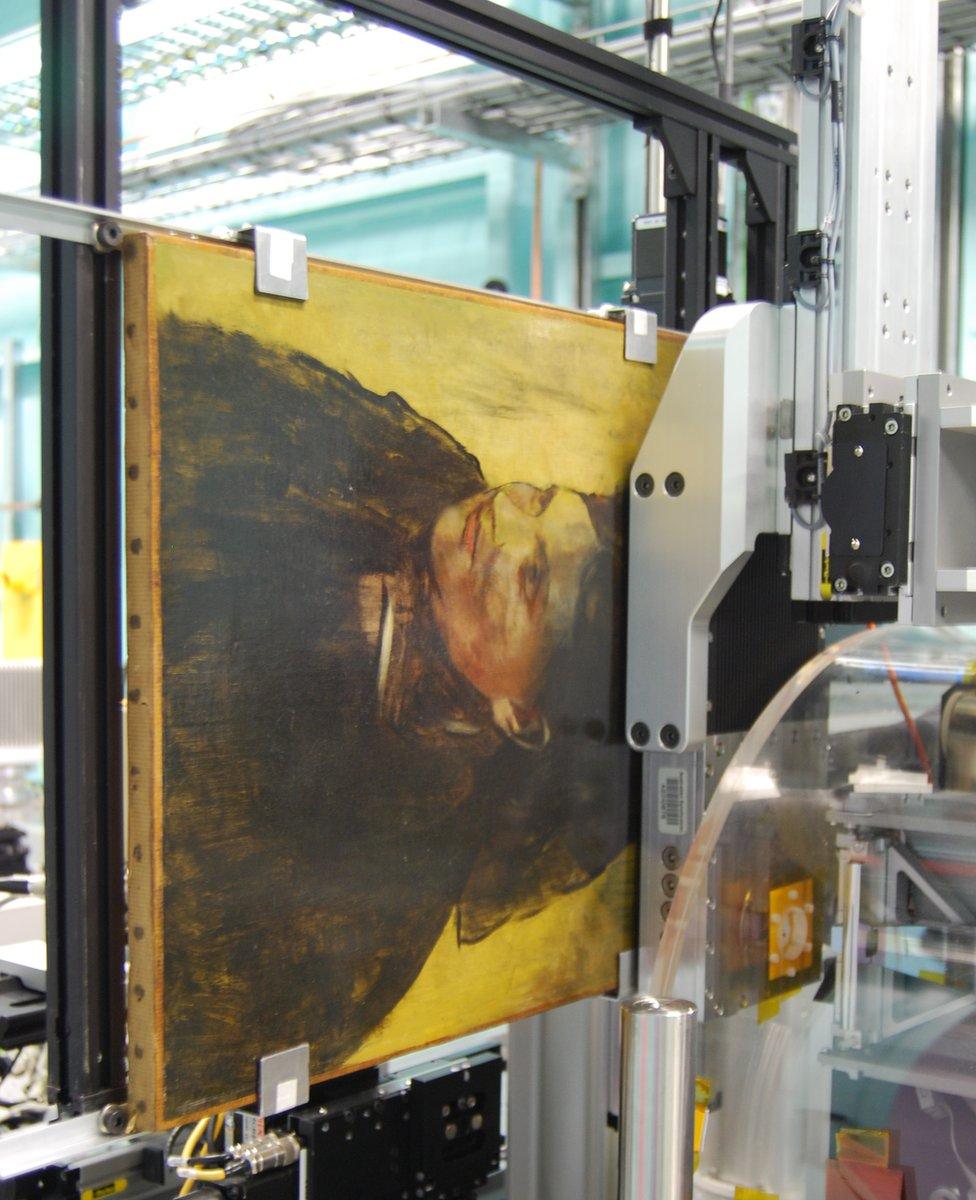
Using the synchrotron is not damaging and the process may help to examine other paintings
However the art expert said it was too early to establish the identity of the underlying portrait, and that curators at National Gallery Victoria were carrying out further research to date the hidden image and confirm the sitter.
He added that there was no question that the underlying image would remain hidden.
"We respect Degas' choices, and honour his final composition for a unique work in its own right," said Dr Varcoe-Cocks.
"It is unquestionably the work the artist was happy with, as it is the completed and signed painting."
The researchers say this X-ray technique, which is non-destructive, is a crucial tool for examining artworks.
"In the past, if a conservator wanted to know more about a painting they would have to take a chip off of it and analyse that small chip… and of course, that is another little bit of the painting gone," said Dr Howard.
"With our technique, we can scan the whole painting and give it back to the gallery in the same condition that they gave it to us."
Follow Rebecca on Twitter: @BBCMorelle, external
Portrait of a Woman (Portrait de Femme) by Edgar Degas ( 1834-1917), courtesy of National Gallery of Victoria, Melbourne. Painted 1876-80, oil on canvas, 46.3 × 38.2 cm, Felton Bequest, 1937.
- Published8 December 2015
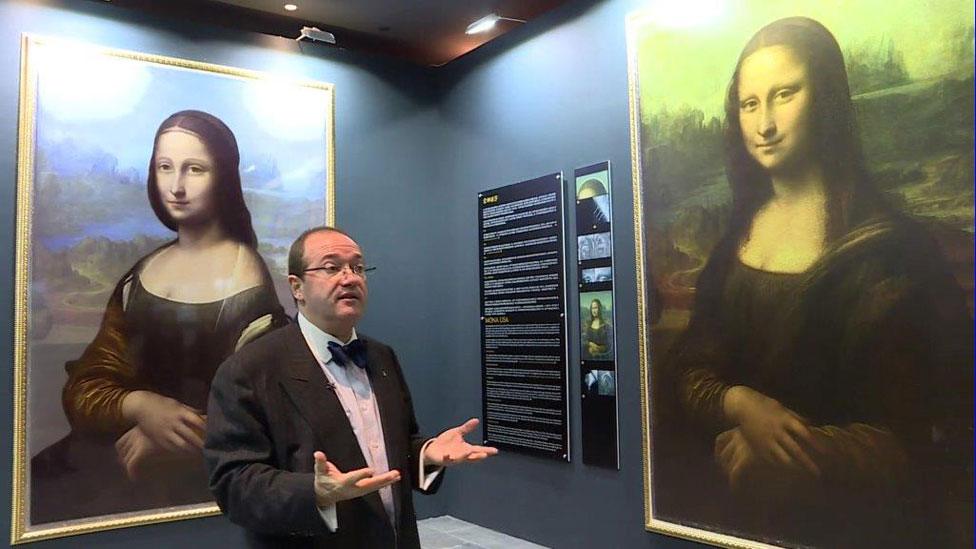
- Published20 January 2015
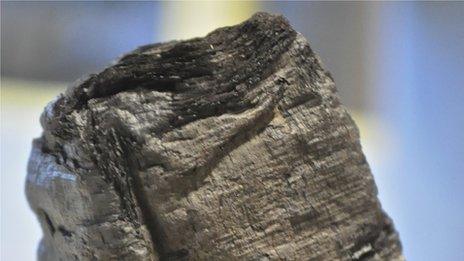
- Published25 June 2015

- Published5 March 2015
